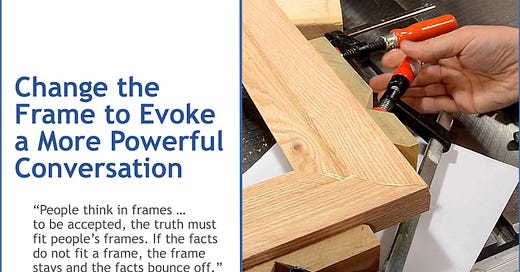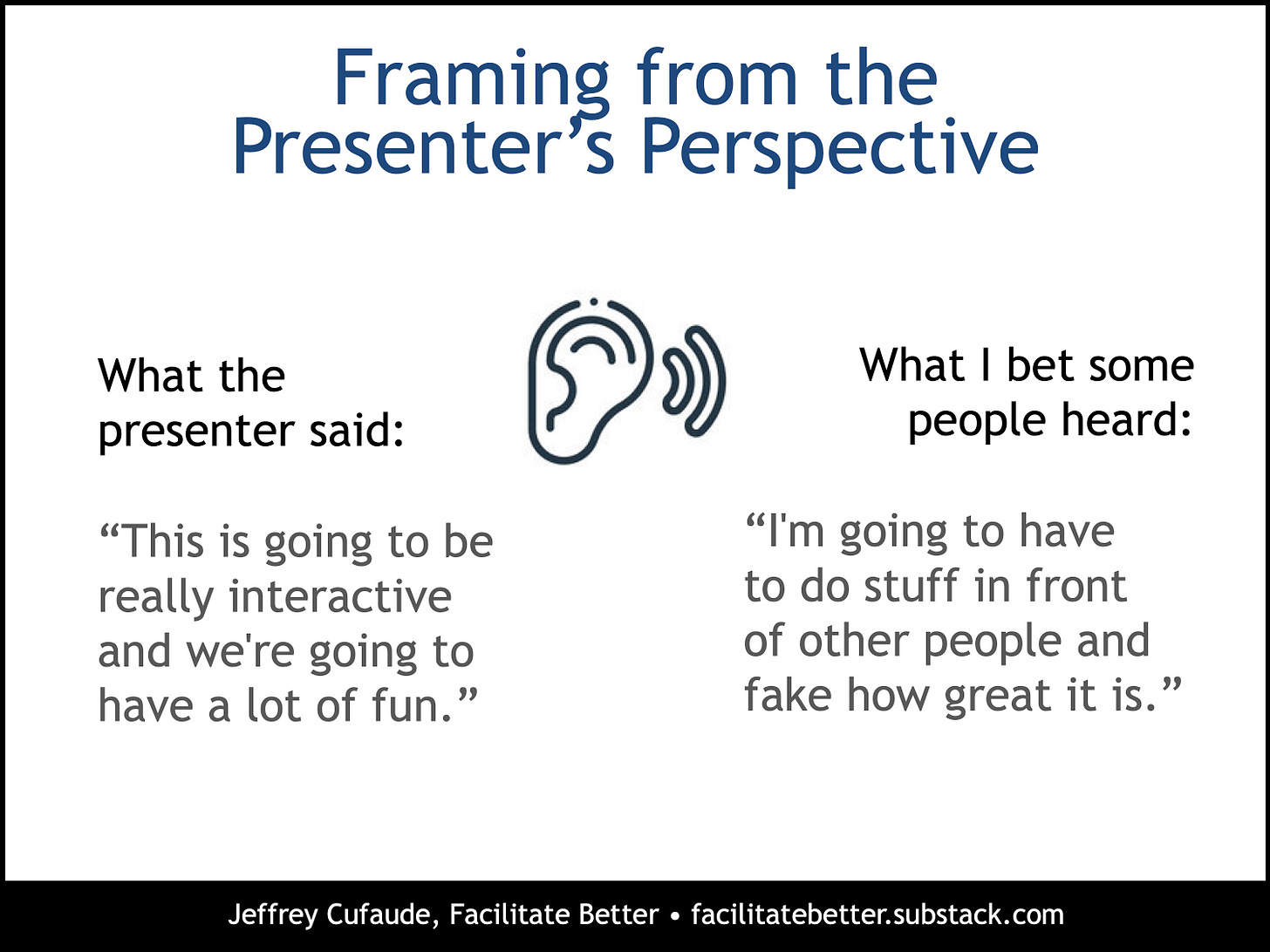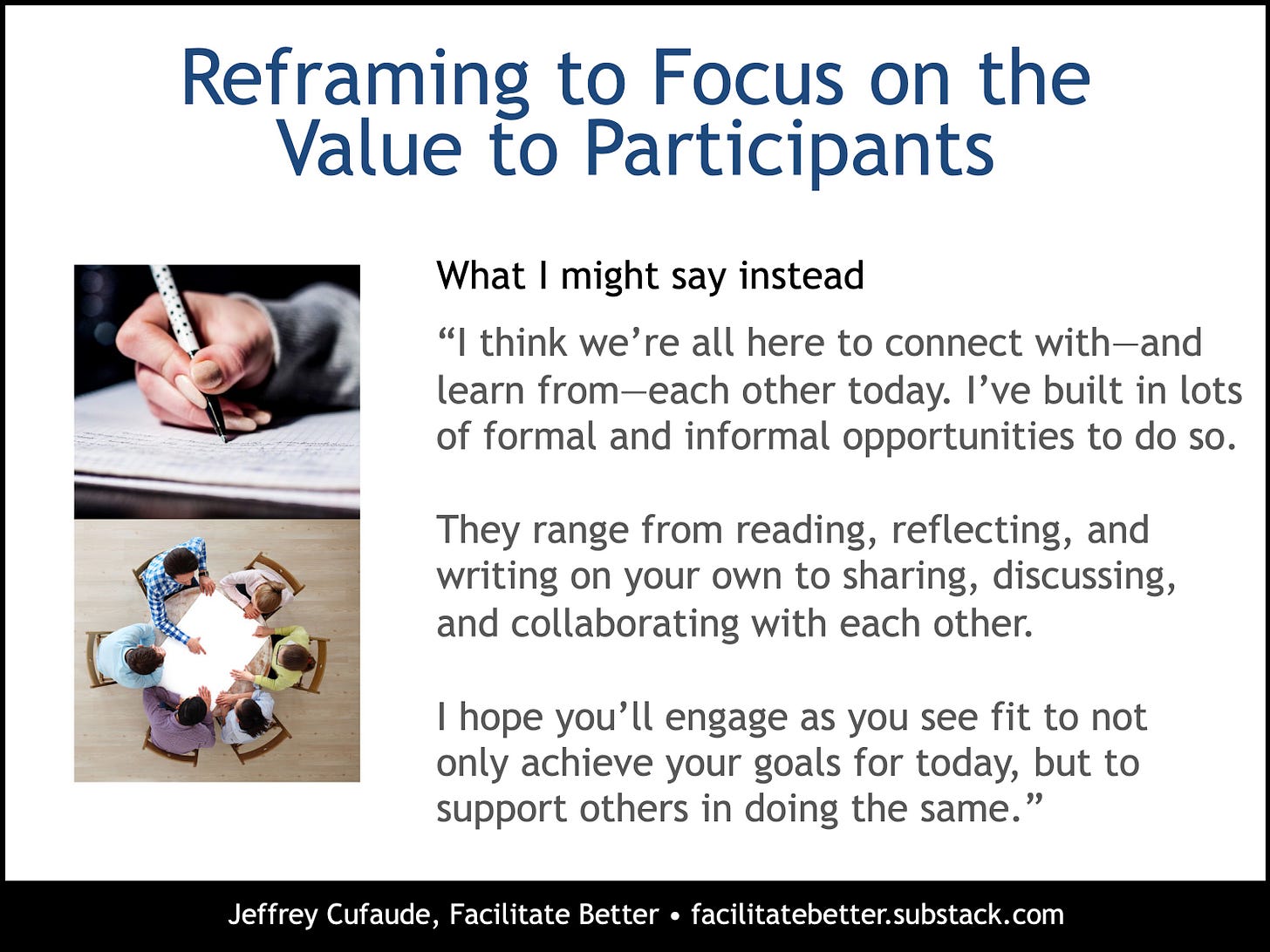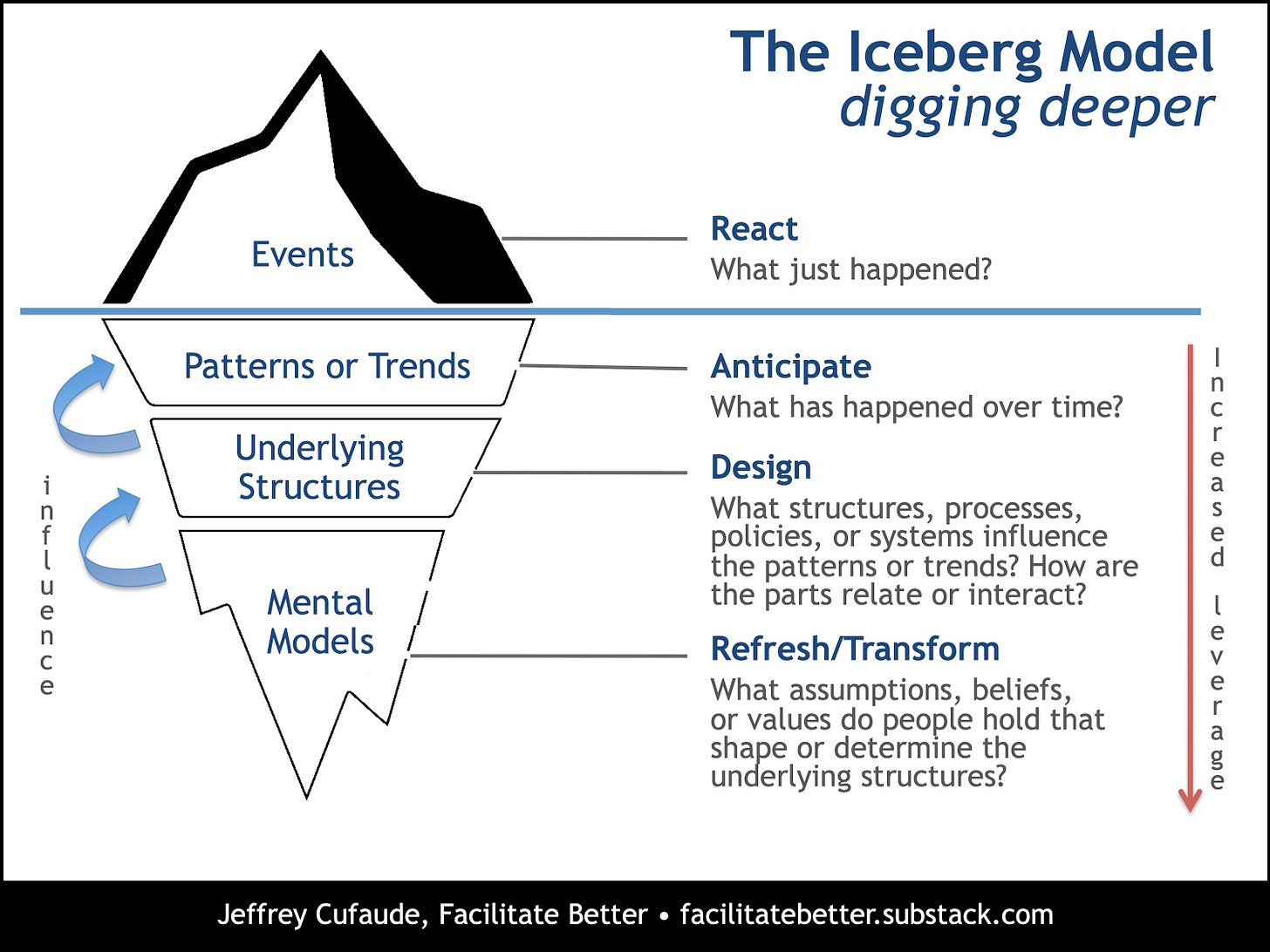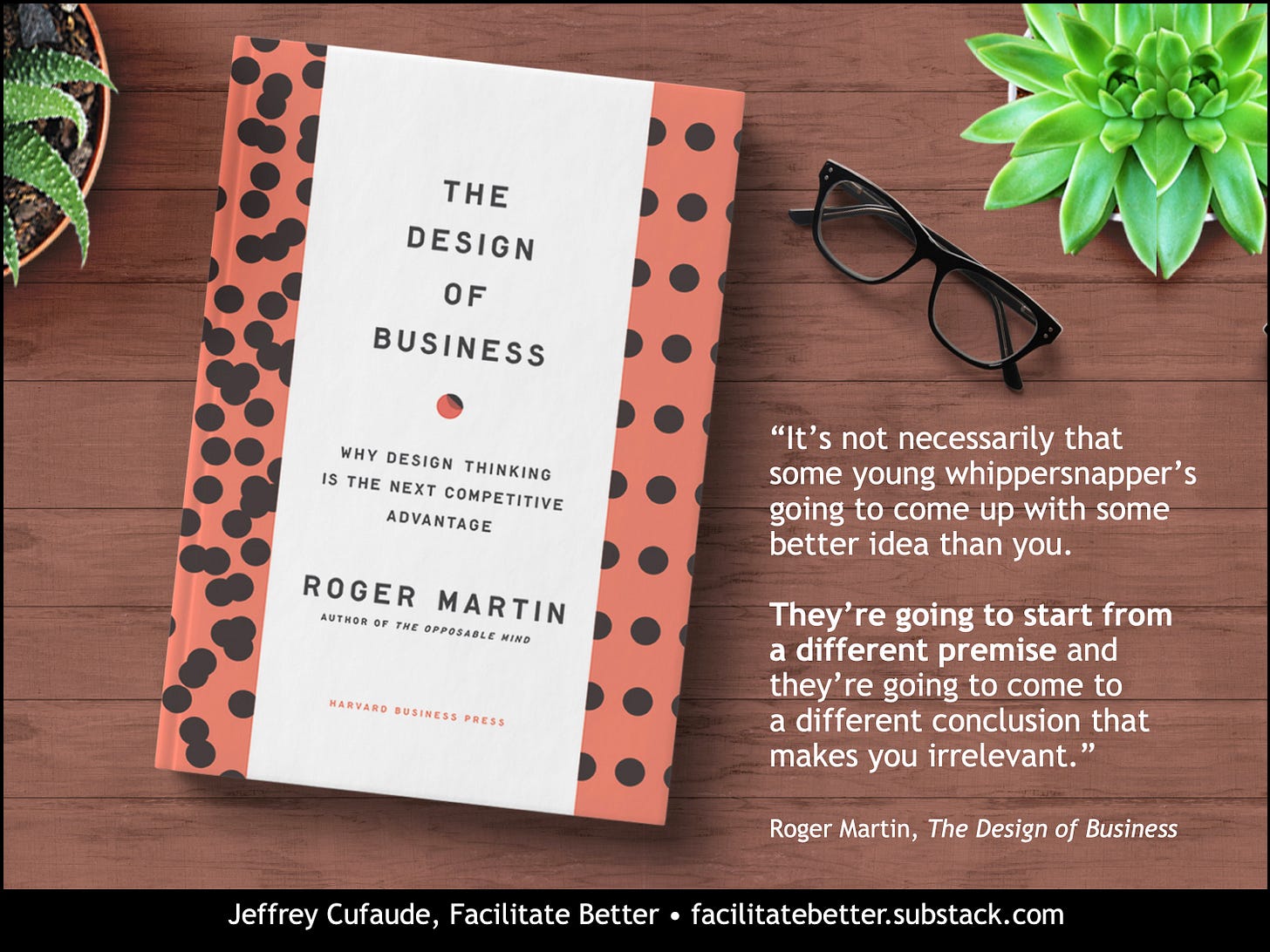Change the Frame to Evoke a More Powerful Conversation (Facilitation Friday #58)
Effective facilitation intentionally uses framing and reframing to support high-quality discussions and decisions that support desired outcomes.
The shape, size, color, and material of the matte and frame influences how you view a photograph or piece of art. The frames that meeting and workshop participants or facilitators use for topics, questions, or issues influence the boundaries, perceptions, thinking, and contributions present in a conversation.
Effective facilitation often involves helping people explore the consequences of frames present in a meeting or workshop, as well as challenging and supporting them to (re)frame their discussions in new language to generate new possibilities.
Example: "I wonder if this issue could be described and discussed using different language than what's currently in play?”
With art, the right frame gives the images it envelops room to breathe, welcoming viewers into an open conversation with the art and inviting their curiosity about, appreciation for, and meaning-making of, what they see. In meetings and workshops, well-framed issues, topics, and questions can do the same and help yield more meaningful thinking and productive discussion as the following example suggests.
Consequences of Unhelpful Framing
Conversations (and participants’ contributions to them) can be overly constrained if framing stifles dissent, asserts biased positions, or amplifies hidden agendas designed to drive a particular outcome. This can impede people sharing their best thinking, fresh ideas from surfacing, or innovative possibilities from being imagined.
Encountering these frames can cause people to feel disenfranchised or literally boxed in by the frame. They can’t find a way into the conversation. In turn, they may recede from the discussion, respond defensively, or engage more aggressively than if the conversation's playing field or framing was more open, exploratory, and inclusive in nature.
Managing Unhelpful Framing
To help reduce potential negative consequences from how individual comments frame issues, facilitators often can carefully paraphrase what is said in ways that expand the frame through which that comment may be heard. In doing so, of course, we must be careful not to distort the participant’s original meaning or inject our own potential biases.
Facilitators also can pose simple questions to make it easier for more expansive conversation and thinking, including:
What are other perspectives on this issue?
How might we reframe the core question to elicit fresh insights?
Does the current framing of the issue have any unnecessary constraints or built-in bias worth challenging?
What alternative framing of this topic might better enhance the thinking and conversation that would be most helpful?
How does the current framing affect the overall tone and value of this conversation?
How might _______ (insert name of a stakeholder group) frame this conversation differently?
These questions help “manage the moment” of a problematic frame, but to support a group’s long-term growth and effectiveness requires facilitation that also:
introduces the concept of framing,
helps participants reflect on their conversations and the different frames that were in play, and
explores what may have led to use of less helpful frames.
This asks us as facilitators to operate as systems thinkers reacting not just to what is said, but using tools like the Iceberg Model to dig deeper and help surface the mental models, structures, and systems that produce limiting framing.
Frames Aren’t Inherently Negative
All conversations and comments involve frames, and every frame limits thinking with the boundaries it places on a discussion. How framing affects the quality and direction of the subsequent conversation should inform if—and—how you intervene as a facilitator.
Creative ideas and innovative solutions often result from (or require) reframing the questions explored. Change the frame—the boundaries—and the conversation changes. As Roger Martin notes, new possibilities emerge when someone starts with a different premise … a different frame. Effective facilitation helps make it easier for participants to embrace “playing with frames” as a normal and useful part of group discussions.
Bottom Line
Changing how your art is framed refreshes the look and feel of the spaces where it hangs and make them feel new again. The same occurs when issues and questions are reframed in conversations. Effective facilitation ensures discussions in workshops, meetings, and planning sessions frame topics and questions to evoke the most thoughtful discussions and decision-making in support of a session’s desired outcomes.
Getting in Action
Think about meetings you facilitate or in which you regularly participate. What is frequently used language that frames issues in ways that enhance (or impede) meaningful exploration? How might you revise or reframe some of the less helpful language?
In addition to the ideas offered in this essay, how might you (either as a participant or facilitator) help a group rethink what you perceive as unhelpful framing?
Consider the George Lakoff quote at the start of this essay. What frames among those you facilitate might be so strong that contrary perspectives or facts cannot penetrate them? How would you handle this situation if you encounter it when facilitating?
© Facilitate Better and Jeffrey Cufaude. All rights reserved.
To affordably license this content for reprint on your site or in electronic or print communications or to contact me regarding customized facilitation skills workshops or consultations, complete this form.

